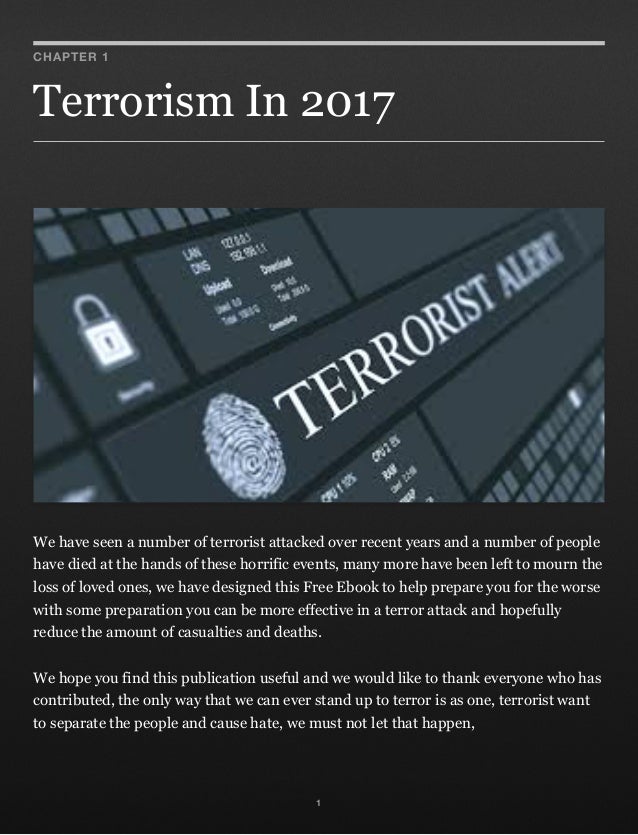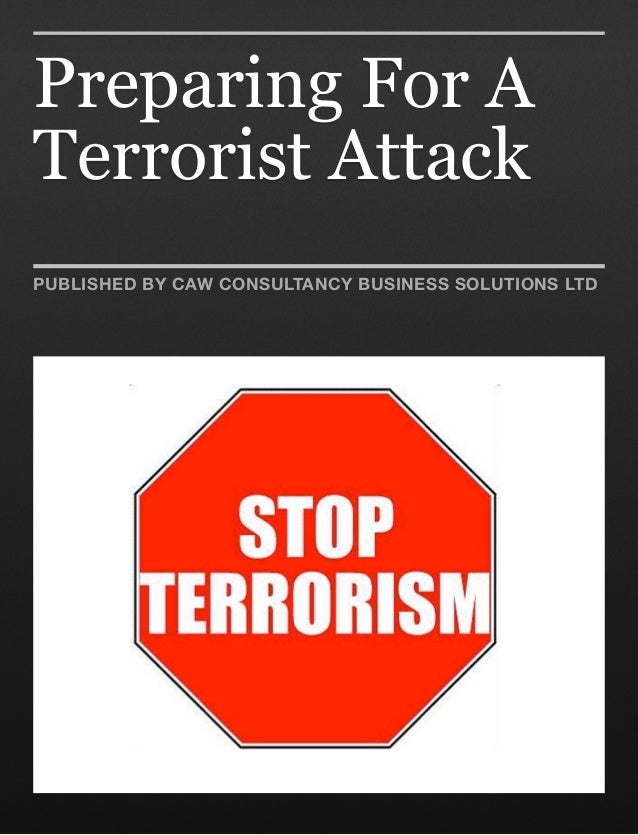Best Info About How To Prepare For A Terrorist Attack
 Preparing for a terrorist attack involves comprehensive planning, awareness, and proactive measures to enhance personal and community safety. While the likelihood of such events is statistically low, being prepared can significantly mitigate potential risks and ensure a swift, effective response if necessary. Here's a step-by-step guide to understanding and applying preparedness strategies in real life:
Preparing for a terrorist attack involves comprehensive planning, awareness, and proactive measures to enhance personal and community safety. While the likelihood of such events is statistically low, being prepared can significantly mitigate potential risks and ensure a swift, effective response if necessary. Here's a step-by-step guide to understanding and applying preparedness strategies in real life:
1. Risk Assessment and Awareness
- Identify Potential Threats: Understand the types of terrorist threats prevalent in your region—be it bombings, cyber-attacks, chemical attacks, or active shooter situations.
- Assess Vulnerabilities: Analyze areas of personal, family, or organizational vulnerability. This includes home security, workplace safety, and public venues frequented.
- Stay Informed: Regularly follow updates from credible sources such as government agencies, law enforcement, and reputable news outlets to stay aware of current threats and advisories.
2. Develop a Comprehensive Emergency Plan
- Create a Family or Organizational Plan: Outline clear procedures for different scenarios, including evacuation routes, meeting points, and communication strategies.
- Assign Roles and Responsibilities: Ensure that every member knows their specific duties during an emergency, such as first aid administration, communication liaison, or evacuation coordinator.
- Establish Communication Channels: Decide on primary and backup methods of communication (e.g., phone calls, text messages, social media) to maintain contact during disruptions.
3. Enhance Physical Security Measures
- Secure Entrances and Exits: Install robust locks, security systems, and access control measures to prevent unauthorized entry.
- Surveillance Systems: Utilize cameras and alarm systems to monitor and secure premises effectively.
- Implement Screening Procedures: In workplaces or public venues, establish protocols for screening individuals and belongings to detect potential threats.
4. Build a Preparedness Kit
- Essential Supplies: Assemble a kit containing water, non-perishable food, first aid supplies, flashlights, batteries, and necessary medications.
- Personal Documents: Keep copies of important documents such as identification, insurance policies, and emergency contact information.
- Tools and Resources: Include items like multi-tools, whistles, and portable chargers to assist in various emergency situations.
5. Training and Education
- First Aid and CPR: Obtain training in basic first aid and CPR to provide immediate assistance to injured individuals.
- Self-Defense Classes: Enroll in self-defense or active shooter training programs to learn techniques for personal protection.
- Regular Drills: Conduct periodic drills for different scenarios to ensure everyone is familiar with emergency procedures and can act swiftly under pressure.
6. Establish Communication Protocols
- Emergency Contacts: Maintain an updated list of emergency contacts, including local law enforcement, medical facilities, and family members.
- Information Sharing: Use apps or platforms that facilitate real-time information sharing during emergencies to stay informed and coordinate responses effectively.
- Public Alert Systems: Subscribe to local alert systems to receive timely notifications about potential threats or ongoing incidents.
7. Community Engagement and Collaboration
- Build Networks: Foster relationships with neighbors, local businesses, and community organizations to create a support network during emergencies.
- Participate in Community Watch Programs: Engage in or establish neighborhood watch initiatives to enhance collective security and vigilance.
- Collaborate with Authorities: Work closely with local law enforcement and emergency services to stay informed about best practices and receive guidance on preparedness strategies.
8. Mental Health and Resilience Building
- Stress Management Techniques: Practice mindfulness, meditation, or other stress-relief methods to maintain mental well-being during and after traumatic events.
- Support Systems: Establish strong support networks with family, friends, or professional counselors to aid in emotional recovery.
- Education and Awareness: Educate yourself and others about the psychological impacts of terrorism and effective coping mechanisms to foster resilience.
9. Regular Review and Improvement
- Assess and Update Plans: Periodically review and revise emergency plans to address new threats, changes in circumstances, or lessons learned from drills and real incidents.
- Feedback Mechanisms: Collect feedback from all stakeholders involved in preparedness activities to identify areas for improvement.
- Stay Adaptive: Remain flexible and ready to adapt strategies as threats evolve and new information becomes available.
10. Leverage Technology and Innovation
- Use Safety Apps: Utilize mobile applications designed for emergency alerts, location tracking, and real-time communication during crises.
- Implement Smart Home Technologies: Integrate smart devices like automated locks, security cameras, and lighting systems to enhance home security.
- Stay Updated on Advancements: Keep abreast of technological advancements in security and emergency management to incorporate effective tools into your preparedness plan.
Applying Theory to Real Life: A Scenario Imagine you live in a major city with a high population density, increasing the potential impact of a terrorist attack. Here's how the above steps come together:
- Risk Assessment: You recognize that public transportation hubs and large gatherings are potential targets.
- Emergency Plan: Your family has a plan that includes immediate evacuation routes from your home and designated meeting points outside the city.
- Physical Security: You've installed security cameras at home and advocate for enhanced security measures at your workplace.
- Preparedness Kit: Each family member has a kit with essentials stored in accessible locations.
- Training: You and your family have completed first aid and active shooter response training.
- Communication: You use a group messaging app to stay connected during emergencies.
- Community Engagement: You participate in a local neighborhood watch and collaborate with nearby businesses on security initiatives.
- Mental Health: Your family practices regular stress-relief activities and maintains open communication about potential threats.
- Review: Annually, you review and update your emergency plan based on new information or after conducting drills.
- Technology: You use smart home devices to monitor security and receive real-time alerts from safety apps.
Key Takeaways:
- Proactive Preparation: Anticipating potential threats and preparing in advance is crucial for effective response.
- Comprehensive Planning: A well-rounded approach covering physical security, communication, training, and community engagement ensures robust preparedness.
- Continuous Improvement: Regularly updating and refining your preparedness strategies helps adapt to evolving threats and enhances overall resilience.

Pakistan 4 Killed In Attack On Karachi Stock Exchange Business And

Infographic How To React In The Event Of A Terrorist Attack


Prepare For Terrorist Attacks

Comments
Post a Comment